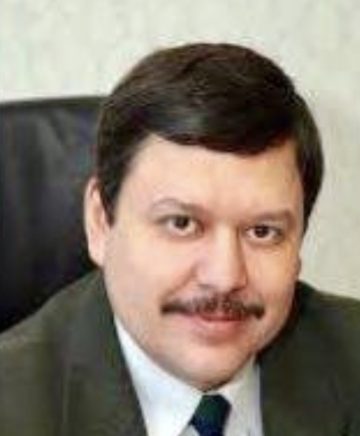Kaliningrad SEZ: Classification of legal regimes

Mikhail Plyukhin
Ph.D., Director
Western Branch of RANEPA
Kaliningrad, Russia
In relation to the Kaliningrad exclave, the federal authorities have consistently applied special legal economic regimes based on the provision of exclusive customs and/or tax benefits. At first, it was regulated by the regulations on the SEZ “Yantar”, then – in the federal laws “On SEZ in the Kaliningrad region”. The legislation on the Kaliningrad SEZ has changed four times in 30 years. In the interests of conducting research and studying the latest economic history of the Kaliningrad region, it is advisable to introduce a classification of economic regimes.
Free Economic Zone in the Kaliningrad Region – FEZ “Yantar” (1991 – 1996)
The motives for the transformation of the regional economy at this stage were: saturation of the regional market, accelerated launch of market economy mechanisms in the region, support for the development of small businesses by providing local businesses with customs privileges.
The relatively high exchange rate of the ruble contributed to the saturation of the consumer market, the development of the “shuttle” business. However, it was not the technologies and equipment necessary for the development of production in the region that were imported, but cheap consumer goods. By December 1996, 80% of the goods on the regional market were imported. The FEZ regime has led to a significant excess of import over export. This effect was taken into account when preparing the Federal Law.
Special Economic Zone in the Kaliningrad Region (1996 – 2006) as amended by Federal Law No. 13-FZ of 22.01.96 – legal regime of management SEZ 1.0
The Federal Law raised the status of the norms regulating economic activity in the region and determined the legal and economic basis for the creation and functioning of the SEZ in the Kaliningrad Region, based on its specific location. The SEZ included the territory of the entire region, except for defense facilities, the functions of the administrator of the SEZ were performed by the administration of the region.
The legal regime of SEZ 1.0 regulated export and import operations in the region by providing economic entities with a free customs zone regime with the minimum possible restrictions. Within the framework of the regime, customs payments are not collected when processing goods:
- from goods produced in the SEZ regime with a sufficient degree of processing (at least 30% of the added value) and exported to other countries and to the rest of the customs territory of the Russian Federation;
- from goods imported from other countries for consumption in the region, or then exported to foreign countries (both with and without processing of goods).
The legal regime of SEZ 1.0 made it possible to adapt the industry of the region in terms of territorial separation.
During the operation of the SEZ 1.0 regime, the conditions of economic activity in Russia have changed, which determined the need to develop a new version of the Federal Law on the SEZ in the Kaliningrad Region. This work was carried out in 2003-2005. A new concept of the SEZ mechanism was proposed, forming a balance of interests of the state, business and the population of the region.
SEZ in the Kaliningrad Region (2006 – 2016) as amended by Federal Law No. 16-FZ of 10.01.2006 – legal regime of management SEZ 2.0
The legal regime of SEZ 2.0 provided for a 25-year extension of the SEZ in the exclave and tax benefits on income and property taxes for large investors.
The tax benefits provided by the legal regime of SEZ 2.0 have created incentives for the creation of new capital-intensive industries in a number of sectors of the regional economy that were not previously stimulated by customs privileges.
During this period, important institutional reforms were carried out in the country: Russia’s accession to the WTO (2012), the integration processes of the Customs Union (active phase – 2009-2011) and the formation of the Eurasian Economic Union (2014). This determined the need for further improvement of the legal regime of the Kaliningrad SEZ.
SEZ in the Kaliningrad Region (2017 – present) as amended by Federal Law No. 393-FZ dated 05.12.2017 – legal regime of management SEZ 3.0
The main innovations of the SEZ 3.0 legal regime: extension of the SEZ validity period until 2045; the SEZ includes the internal sea waters adjacent to the territory of the region and the territorial sea of the Russian Federation; the minimum amount of investments in the form of capital investments for SEZ residents in priority sectors for the region has been reduced; the procedure for entry into and exit from the territory of the region has been simplified; features of the stay of foreigners and stateless persons in the region; reduced social contributions when creating new jobs by SEZ residents to 7.6%; exemption for 180 days from customs VAT when exporting products from the region to the EAEU market.
As of 03/29/2022, 280 active investment projects were registered in the unified register of residents of the Kaliningrad SEZ with a total amount of declared investments in the first three years of implementation – 157.3 billion rubles and a staff number of 51,115 people.
There is no doubt that these innovations – the legal regimes of the Kaliningrad SEZ 1.0, 2.0 and 3.0 have changed the economic conditions on the territory of the Kaliningrad region and led to a significant change in the structure of the regional economy.
Expert article 3254
>Back to Baltic Rim Economies 3/2022
To receive the Baltic Rim Economies review free of charge, you may register to the mailing list.
The review is published 4-6 times a year.
